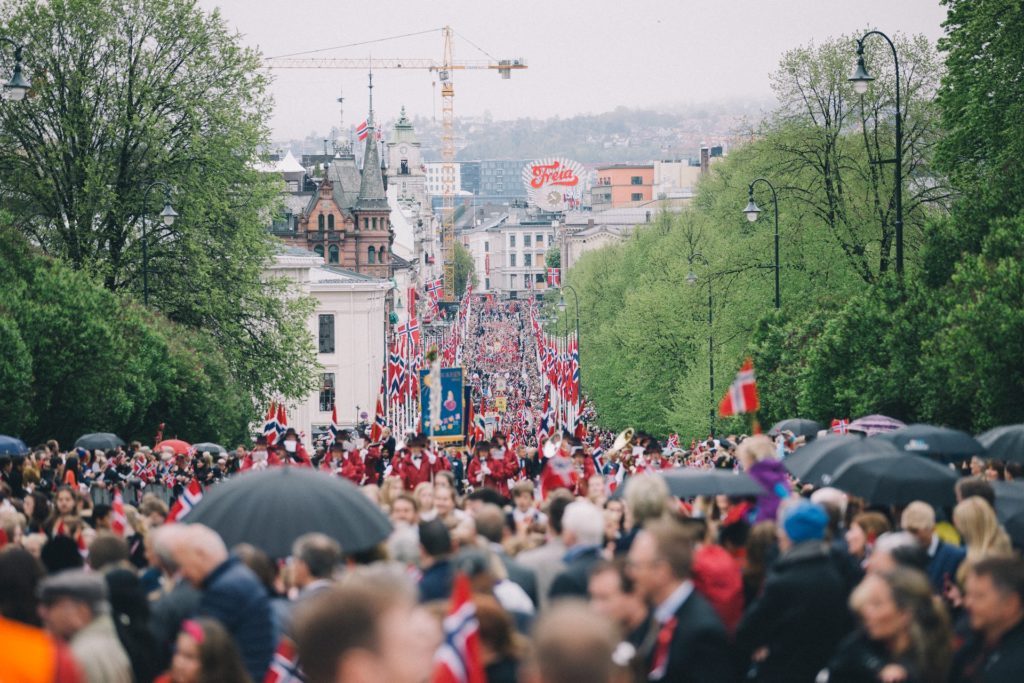Ah yes, the famed northern lights, aka aurora borealis, can certainly be found in Norway. You’ve seen the Instagram posts, and now it’s time to see them for yourself in person. It’s a truly unique Nordic experience and is highly recommended to check out.
If you find yourself in a southern part of the country, such as Oslo, you will unfortunately not be greeted with nightly shows from your balcony. To see the northern lights you need to go, surprise surprise, far up north. Although at certain times northern lights can be seen just a few hours’ drive from Oslo, it’s best to go all the way to the top, specifically the Tromsø or Alta regions.
The best time to see the northern lights is between the beginning of September and mid-April every year. It takes both a bit of planning and some good luck to see the lights. So be sure to give yourself a few days or longer to have a few attempts. Things such as overcast skies can limit your visibility, and much like many things in Norway, the weather can be unpredictable.
What Are the Northern Lights?
The Northern Lights are a natural light display that occurs in the Earth’s polar regions, predominantly in the Northern Hemisphere. This phenomenon is called the Aurora Borealis in the north and the Aurora Australis in the south. The lights typically manifest as shimmering curtains or waves of vibrant colors, including green, pink, purple, and even red, dancing across the night sky.
The Science Behind the Magic
The Northern Lights are a result of complex interactions between the solar wind, Earth’s magnetic field, and the gases in the atmosphere. Here’s a simplified explanation of the process:
- Solar Wind: The Sun constantly releases charged particles, primarily electrons and protons, known as the solar wind.
- Magnetosphere: Earth’s magnetic field, called the magnetosphere, extends into space and interacts with the solar wind.
- Collision with Atmosphere: The charged particles from the solar wind collide with the gases in Earth’s atmosphere, primarily oxygen and nitrogen.
- Excitation and Emission: These collisions excite the gas molecules, causing them to release energy in the form of photons, which are particles of light.
- Color Variations: The specific gas and altitude at which these collisions occur determine the color of the Northern Lights. For example, green lights are typically the result of oxygen molecules at lower altitudes, while red lights come from higher altitudes and nitrogen.
Northern Lights in Norway
Norway, with its location close to the Arctic Circle, is one of the prime destinations for witnessing the Northern Lights. Here are some facts and tips about experiencing this celestial phenomenon in Norway:
1. Ideal Viewing Locations: Northern Norway, particularly Tromsø, the Lofoten Islands, and Finnmark, offers some of the best viewing locations for the Northern Lights due to its proximity to the Arctic Circle.
2. Seasonal Timing: The best time to see the Northern Lights in Norway is during the winter months, from late September to early April when the nights are longest. However, it’s essential to visit during the darkest, clearest nights for optimal viewing.
3. Weather Considerations: Weather conditions play a significant role in Northern Lights visibility. Clear, cloudless skies provide the best viewing opportunities.
4. Natural Wonders: Combining a Northern Lights experience with other natural wonders, such as Norway’s fjords, can create a truly magical and memorable trip.
5. Tours and Guides: Many tour operators in Norway offer Northern Lights tours with experienced guides who can lead you to prime viewing spots and provide valuable insights about this celestial phenomenon.
6. Patience Pays Off: While the Northern Lights can be seen on many nights, they are a natural phenomenon, and there are no guarantees. Patience is key to capturing their magic.
The Cultural Significance
In Norwegian folklore, the Northern Lights are often associated with magical creatures and otherworldly beings. They have inspired countless myths and legends, adding to their mystique in the culture.
Conclusion
The Northern Lights in Norway are a celestial spectacle that has captured the imagination of people for generations. To witness this extraordinary phenomenon in one of the world’s most stunning natural settings is a remarkable experience. The science behind the Northern Lights is as fascinating as the lights themselves, and the combination of the two makes Norway a bucket-list destination for those seeking the magic of the Aurora Borealis.
Becoming Norwegian
How to become a Norwegian by doing these things.








